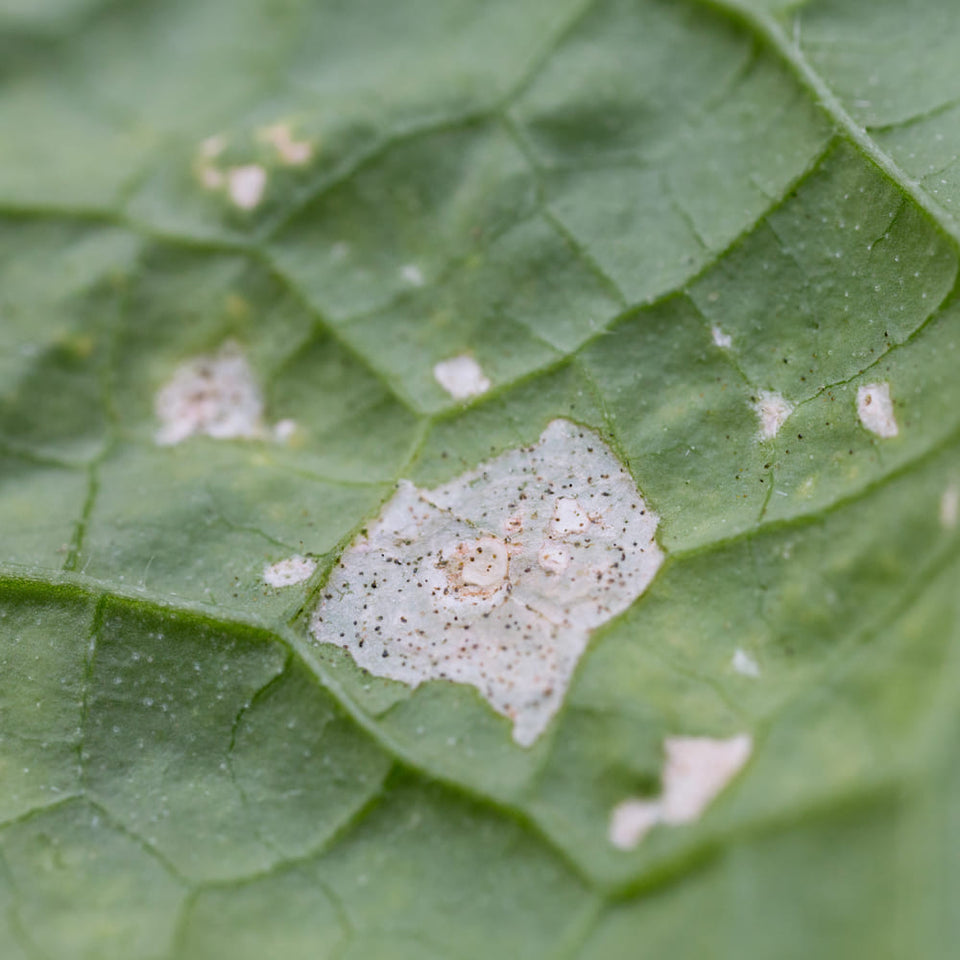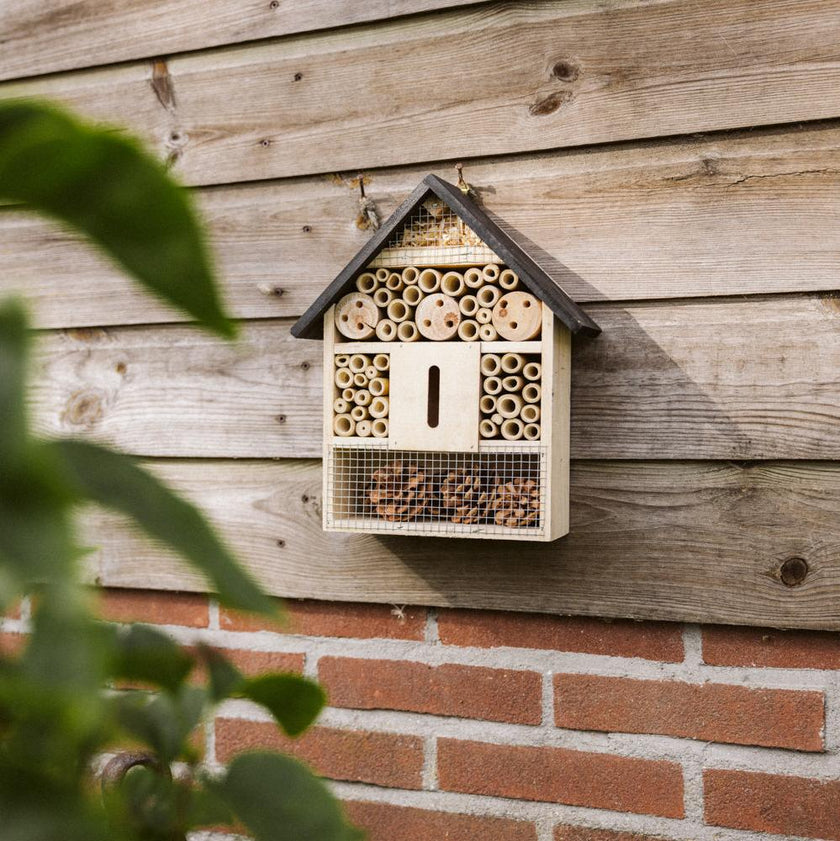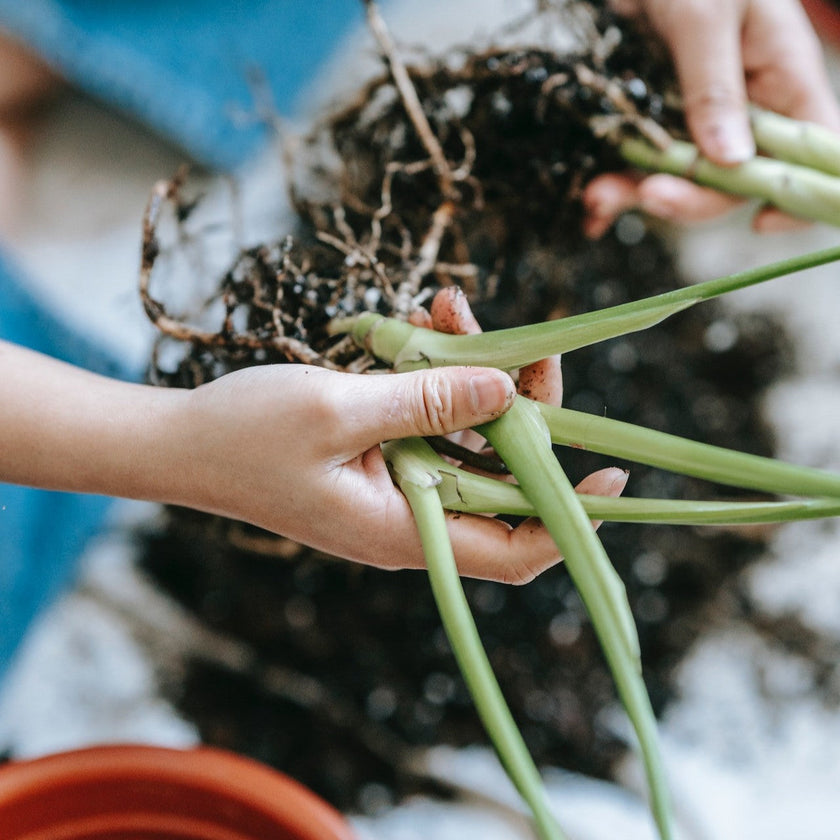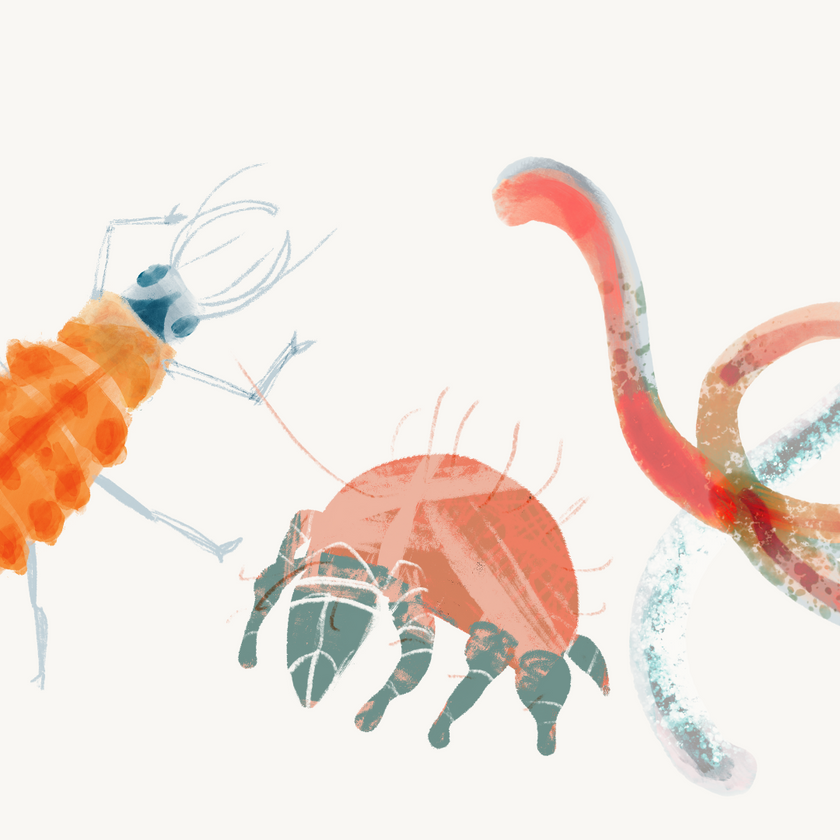Houseplants bring a touch of nature into the living room, it also provides a refreshing appearance and a serene state of mind.
For any indoor gardener, the discovery of thrips on beloved houseplants is frightening. The motto for combating thrips is: prevention is better than cure. The Optimized Combi deal put together by Insect Heroes contains all natural enemies to combat thrips in a plant-based way. In this blog we explain why!
Noticing a thrips infestation too late can cost a plant life. Here are the most common signs to look out for:
The life cycle of thrips can be divided into four stages, namely: the egg, the larvae, pupa and the adult. Below is explained at what moment the right Hero storms the trips:
For any indoor gardener, the discovery of thrips on beloved houseplants is frightening. The motto for combating thrips is: prevention is better than cure. The Optimized Combi deal put together by Insect Heroes contains all natural enemies to combat thrips in a plant-based way. In this blog we explain why!
How do I recognize thrips?
Thrips are so small that you have to look carefully to find them. Adult thrips have an elongated body with ragged wings. They are often no larger than 1-2mm. The colors in which they occur vary from yellow, brown to black. The dreaded creatures can often be found in the flower buds or on the leaves of various types of plants.Noticing a thrips infestation too late can cost a plant life. Here are the most common signs to look out for:
- Silver or bronze stripes: thrips feed on plant sap from plant cells. Because the plant cells die due to all that slurping, silver or bronze stripes appear.
- Black dots in the damaged areas: from all that slurping, the thrips lay black feces on the affected parts of the leaf.
- Deformed flowers: thrips also like flower buds, which causes the flower buds to look deformed or not open properly.

How do thrips infect houseplants?
Thrips are resourceful creatures that use multiple tactics to invade your urban jungle. This way they can hitch a ride on new plants from the store, or fly in through open windows and doors. Sometimes they also want to hold on to clothing. Once inside, reproduction has begun, so it is necessary for your plant not to waste time.
Help! I have thrips in my plants. What now?
If you have determined that you are suffering from thrips, it is advisable to protect your houseplants. Here are some tips to combat thrips:- Isolate the infected plants: If you notice symptoms on a particular plant, isolate it immediately so that the infestation does not spread to other plants.
- Inspect & Inspect: Inspect the other houseplants regularly.
- Introduce natural enemies to the houseplants: natural enemies are the most effective & natural way to combat thrips.
Combating thrips with natural enemies
We see natural enemies as Heroes with plant-based superpowers. This includes predatory mites, nematodes, lacewing larvae & trapping cards. Each Hero has a specific role here in combating thrips.The life cycle of thrips can be divided into four stages, namely: the egg, the larvae, pupa and the adult. Below is explained at what moment the right Hero storms the trips:
- Insect Hero, Irski : is a predatory mite with a generalist effect. This means that he likes everything, but his preference is for thrips larvae. When the eggs of thrips hatch, the predatory mites start to take action. This allows an incipient infestation to be stopped immediately. Irski remains active in the plant for 7 to 8 weeks, so your plant is protected against thrips for longer. Only when the thrips larvae grow larger do they fight back by hitting with their bottoms. It is then time for Carna.
- Insect Hero, Carna : is a lacewing larva with predatory properties. It searches the plants more or less haphazardly for prey. Carna, like larger predators, are active at night. On average, one lacewing larvae can; Eating 200-300 thrips larvae in its lifetime of different sizes. It even hunts adults, but unlike adult thrips, Carna has no wings. Then it's time for catch cards.
- Sticky Leafs : the large, yellow, sticky catch cards are a feast for the eyes of the thrips. Where they think they will make a soft landing, it will be their last flight. And where the adults fly, the larvae first need to pupate until they can change shape. But we're taking a stab at that with Felti.
- Insect Hero, Felti : is a nematode that you distribute over the potting soil. Most thrips species drop themselves into the potting soil. Here they encounter the nematodes that enter through natural openings and then excrete a bacterium. The bacteria kills the thrips larvae within 2-3 days.
Which natural enemies should I choose?
Now that you can call yourself a "thrip expert" after reading this blog, using the correct dosage of natural enemies is the final step. We have put together three different packages for your urban jungle:- Combi deal: this package is excellent for directly combating thrips. It contains two Heroes with Felti & Carna. This package is good for at least 10 houseplants.
- Optimized Combi deal : as the name of the package suggests, this package has been optimized to combat thrips. It contains all discussed Heroes including capture cards. With this package you combat all stages of thrips and your plant remains protected against thrips for longer. This package is good for at least 10 plants.
- Jungle Deal: a complete package to protect your urban jungle against trips. Ideal for people with many plants.

















































